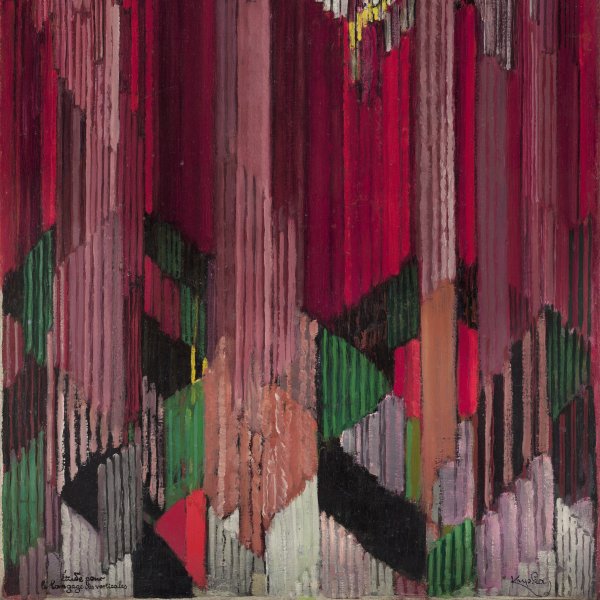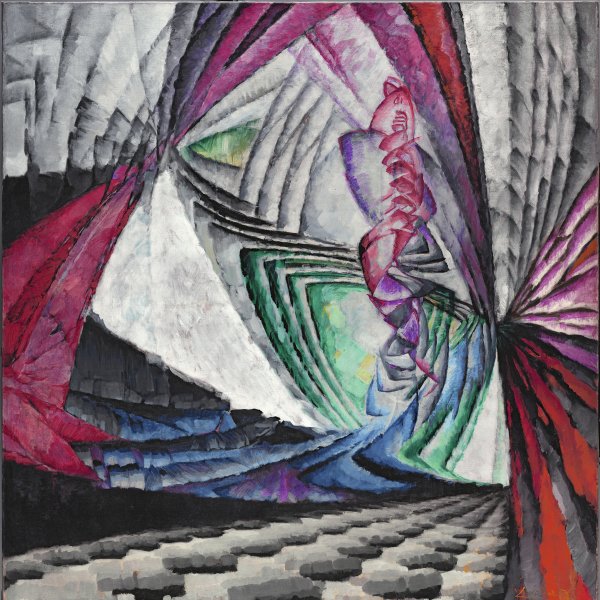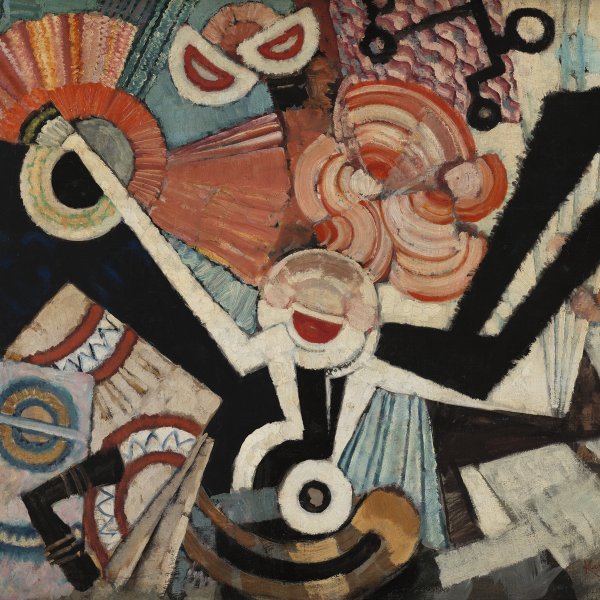František Kupka
Frantisˇek Kupka, one of the pioneers of abstraction, was born in a small town in east Bohemia and trained as an artist in Prague and Vienna. He settled in Paris in 1896, earning his living as an illustrator for a time. In the French capital he found an environment that was more conducive to the development of his painting and was exposed to the influence of Neo-Impressionism, Symbolism and Modernism. When Cubism burst onto the art scene, Kupka kept his distance, although he began to mix with a few artists belonging to this movement, particularly the brothers Jacques Villon and Raymond Duchamp-Villon, who lived in his town, Puteaux. He played an active part in their discussions about simultaneity in art, the depiction of movement and the Bergsonian philosophy of time that was in vogue during those years, but was never involved in the group’s activities.
Independent by nature, Kupka gradually shaped his personal nonobjective vision of art and as early as 1912 caused a sensation at the Paris Salon d’Automne with his series entitled Amorpha, the first totally abstract works to be publicly shown. His abstraction, full of philosophical meanings and intentions, comes close to music and the theories on the surge of energy. In 1923 he published La Création dans les arts plastiques, an essay expressing his conviction that art was a mechanism for creation on the fringes of nature and, like music, could be expressed through formal values. Kupka played an active role in the First World War and he and his wife sought refuge in Beaugency, beside the Loire, during the Second World War.
Although his work was exhibited on a few occasions, Kupka spent almost his entire life in dire financial straits. He died in isolation and alienation at his Puteaux home in 1957. The following year the Musée National d’Art Moderne in Paris held a retrospective of his work.








